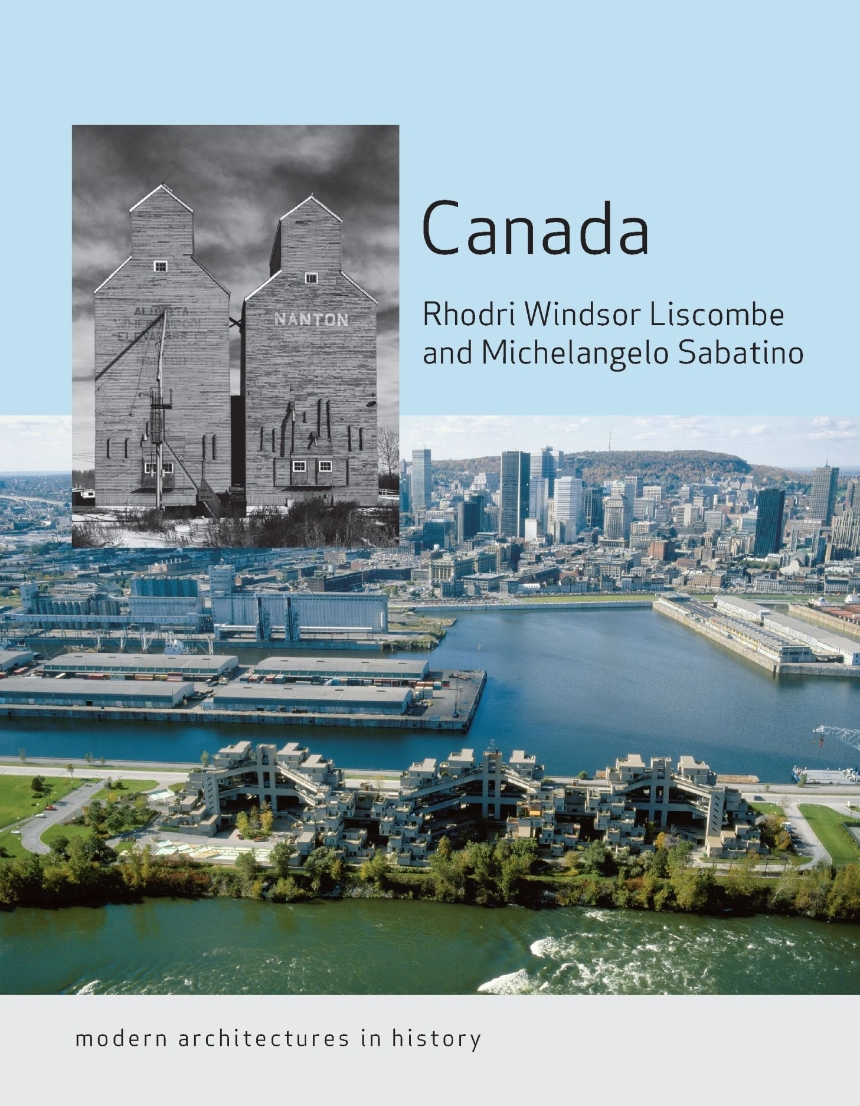Canada is a country of massive size, of diverse geographical features and an equally diverse population—all features that are magnificently reflected in its architecture. In this book, Rhodri Windsor Liscombe and Michelangelo Sabatino offer a richly informative history of Canadian architecture that celebrates and explores the country’s many contributions to the spread of architectural modernity in the Americas.
A distinct Canadian design attitude coalesced during the twentieth century, one informed by a liberal, hybrid, and pragmatic mindset intent less upon the dogma of architectural language and more on thinking about the formation of inclusive spaces and places. Taking a fresh perspective on design production, they map the unfolding of architectural modernity across the country, from the completion of the transcontinental railway in the late 1880s through to the present. Along the way they discuss architecture within the broader contexts of political, industrial, and sociocultural evolution; the urban-suburban expansion; and new building technologies. Examining the works of architects and firms such as ARCOP, Eric Arthur, Ernest Cormier, Brigitte Shim, and Howard Sutcliffe, this book brings Canadian architecture chronologically and thematically to life.
A distinct Canadian design attitude coalesced during the twentieth century, one informed by a liberal, hybrid, and pragmatic mindset intent less upon the dogma of architectural language and more on thinking about the formation of inclusive spaces and places. Taking a fresh perspective on design production, they map the unfolding of architectural modernity across the country, from the completion of the transcontinental railway in the late 1880s through to the present. Along the way they discuss architecture within the broader contexts of political, industrial, and sociocultural evolution; the urban-suburban expansion; and new building technologies. Examining the works of architects and firms such as ARCOP, Eric Arthur, Ernest Cormier, Brigitte Shim, and Howard Sutcliffe, this book brings Canadian architecture chronologically and thematically to life.
320 pages | 200 halftones | 6 3/4 x 8 2/3 | © 2016
Modern Architectures in History
Architecture: Architecture--Criticism
Art: Photography
Reviews
Table of Contents
Introduction
one Modernity in Canada, 1886–1914
two Modernizing the Dominion, 1914–45
three Modernism and Reconstruction, 1945–67
four Modernism with a Punch, 1945–67
five Questioning Modernism, 1967–86
six Regenerative Modernism, 1986 to the Present
seven Canada’s Modernist Legacy
References
Bibliography
Acknowledgements
Photo Acknowledgements
Index
one Modernity in Canada, 1886–1914
two Modernizing the Dominion, 1914–45
three Modernism and Reconstruction, 1945–67
four Modernism with a Punch, 1945–67
five Questioning Modernism, 1967–86
six Regenerative Modernism, 1986 to the Present
seven Canada’s Modernist Legacy
References
Bibliography
Acknowledgements
Photo Acknowledgements
Index

